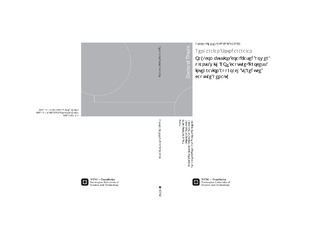| dc.contributor.author | Soundararajan, Rengarajan | |
| dc.date.accessioned | 2015-05-13T08:22:55Z | |
| dc.date.available | 2015-05-13T08:22:55Z | |
| dc.date.issued | 2015 | |
| dc.identifier.isbn | 978-82-326-0736-5 | |
| dc.identifier.isbn | 978-82-326-0737-2 | |
| dc.identifier.issn | 1503-8181 | |
| dc.identifier.uri | http://hdl.handle.net/11250/283577 | |
| dc.description.abstract | This thesis presents studies on coal based power plants with CO2 capture. As coal is the single largest fuel in use today to generate electricity, technologies to improve the efficiency and reduce emissions are critical in the future. The oxycombustion method is one of the three main routes to capture at least 90% of the CO2 generated by a fossil fuel based power plant. In addition to the standard power plant components such as the boiler and the steam cycle, systems to generate oxygen (ASU) and purify/compress the flue gas (CPU) are required. These additional systems cause an efficiency penalty of around 10% points and also incur additional capital cost. The objective of this project is to investigate the efficiency improvement potential of the oxy-combustion coal based power plant. Process Integration methodologies such as Pinch and Exergy analyses were used to conduct the investigations. Process Integration methodologies are proven and can be applied to power plants with capture to bring down the efficiency penalty. Baseline simulations of the overall power plant with capture were established as a part of the study. Recycling the untreated hot flue gas for boiler temperature control provides the best performance. More heat can be recovered from the flue gas before being processed by the CPU by condensing the moisture present in it. The recovered heat can either be used for boiler feedwater preheating or oxygen preheating. Oxygen preheating proved to be a better choice from the efficiency standpoint. Heat can also be recovered from the CPU compressors for feedwater preheating. All the above mentioned heat integration options boost the system efficiency and reduce the efficiency penalty to less than 7% points. Operating the boiler at a higher pressure enhances flue gas heat recovery. A boiler operating pressure of 16 bars was found to be near-optimal. Additionally, adiabatic compression of the oxygen stream eliminates the need for preheating while keeping the system simple. Finally, a combined pinch and exergy analysis helps modify the feedwater preheating system of the steam cycle. Pinch analysis helps target the energy (steam mass flows) requirements of the feedwater preheating system while exergy analysis guides the system design. The modified steam cycle has a better performance than the traditional steam cycle while maintaining reasonable network complexity. All the above mentioned process improvements help to attain a capture efficiency penalty of around 6% points. | nb_NO |
| dc.language.iso | eng | nb_NO |
| dc.publisher | NTNU | nb_NO |
| dc.relation.ispartofseries | Doctoral thesis at NTNU;2015:34 | |
| dc.title | Oxy-combustion coal based power plants with CO2 capture: Process integration approach to reduce capture penalty | nb_NO |
| dc.type | Doctoral thesis | nb_NO |
| dc.subject.nsi | VDP::Technology: 500::Environmental engineering: 610 | nb_NO |
